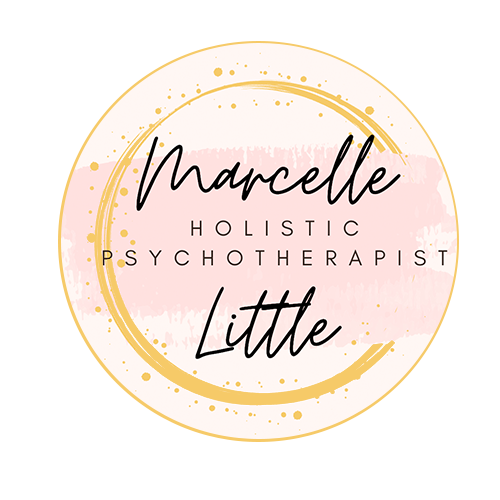7 Techniques for Better Emotional Regulation in Your Daily Life
Navigating daily life can sometimes feel like an emotional rollercoaster. Whether it's work stress, family dynamics, or unexpected challenges, our emotions can quickly spiral, leaving us feeling overwhelmed. Fortunately, emotional regulation techniques can help us manage our feelings more effectively, fostering greater resilience and inner balance.
In this post, we’ll explore seven practical and empowering strategies that can support emotional well-being, helping you cultivate a sense of control and confidence in your daily life.
1. Mindfulness Meditation: Cultivating Present-Moment Awareness
Mindfulness meditation is a powerful practice for developing emotional awareness. By taking a few minutes each day to sit quietly and focus on your breath, you can learn to observe your emotions without judgment. This practice fosters emotional clarity, making it easier to recognize and navigate challenging feelings before they escalate.
Beyond structured meditation, weaving mindfulness into your daily routine can amplify its benefits. Engage fully in simple activities—savor your morning coffee, feel the ground beneath your feet on a walk, or listen attentively during conversations. These small moments of presence help anchor you, reducing emotional reactivity and enhancing your ability to self-regulate.
2. Journaling: A Safe Space for Reflection and Processing
Writing in a journal can be an invaluable tool for emotional regulation. When you put your thoughts and feelings on paper, you externalize them, making it easier to identify emotional triggers and patterns. Journaling provides a non-judgmental space to process emotions, easing their intensity and fostering self-awareness.
Additionally, tracking your emotions over time can reveal important insights. Try setting aside a few minutes each day or week to write freely. There’s no need for perfection—just let your thoughts flow. Over time, you’ll notice recurring emotional patterns, which can help you develop healthier coping strategies.
3. Breath Control: Engaging the Body’s Natural Relaxation Response
The way we breathe has a direct impact on our nervous system and emotional state. Breath control techniques, such as deep diaphragmatic breathing or the 'four-seven-eight' method (inhale for four seconds, hold for seven, exhale for eight), can quickly shift your body from a stress response to a state of calm.
When emotions begin to feel overwhelming, pause and take a few slow, intentional breaths. This simple yet profound act creates space between a trigger and your reaction, allowing you to approach challenges with greater clarity and composure. Making breathwork a daily habit can significantly enhance emotional resilience.
4. Positive Self-Talk: Rewriting Your Inner Dialogue
The way we speak to ourselves profoundly influences our emotions. Negative self-talk can fuel anxiety, self-doubt, and emotional distress, while intentional, positive affirmations can foster inner stability and confidence.
Start by noticing critical thoughts and gently challenging them. Instead of saying, “I can’t handle this,” try reframing it: “I am capable of navigating this challenge.” Over time, practicing self-compassion and positive self-talk can reshape your emotional landscape, making self-regulation feel more natural.
5. Physical Movement: Using the Body to Shift Emotions
Exercise is not only beneficial for physical health but also plays a crucial role in emotional regulation. Physical activity releases endorphins, which help counteract stress and improve mood. Whether it’s a brisk walk, yoga, or a spontaneous dance session, movement is a powerful way to discharge pent-up emotions.
If structured workouts feel overwhelming, start small—take the stairs, stretch during breaks, or go for a short walk outside. The goal is consistency. Over time, incorporating movement into your routine can serve as a reliable tool for emotional balance and stress reduction.
6. Setting Healthy Boundaries: Protecting Your Emotional Well-Being
Boundaries are essential for emotional health. They help you protect your time, energy, and emotional space, reducing feelings of overwhelm and resentment. Setting boundaries isn’t about shutting people out—it’s about honoring your needs and ensuring healthy interactions.
This could mean saying no to commitments that drain you, communicating openly about your emotional limits, or carving out time for self-care. While asserting boundaries may feel uncomfortable at first, it is a vital skill that fosters emotional regulation, resilience, and self-respect.
7. Seeking Support: The Power of Connection
Emotional regulation doesn’t have to be a solo endeavor. Talking to a trusted friend, family member, or therapist can provide validation, perspective, and relief. Connection is a fundamental human need, and seeking support is an act of strength, not weakness.
Consider creating a support network by scheduling regular check-ins with loved ones or joining a group where you feel understood. Processing emotions in a safe space prevents them from accumulating and fosters greater emotional clarity. Remember, healing and regulation thrive in connection, not isolation.
Final Thoughts
Emotional regulation is a skill that takes time and practice, but with consistent effort, it becomes second nature. By integrating these seven techniques—mindfulness, journaling, breathwork, positive self-talk, movement, boundaries, and support—you can cultivate a greater sense of stability and empowerment in your daily life.
If you're looking for deeper support in navigating emotional challenges, therapy can provide personalized tools and guidance. In my psychotherapy practice, I help individuals work through women issues, anxiety in relationships, codependency, and life transitions, supporting them in reclaiming their confidence and emotional well-being. If you're ready to explore this journey, I invite you to reach out.

